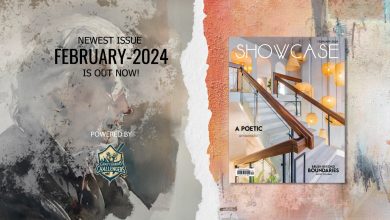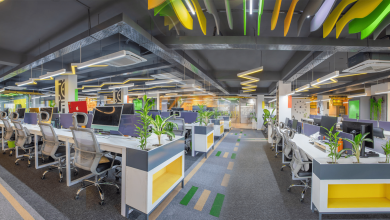The predominant tendency to ignore environmental needs during housing expansions, increasing overpopulation and unplanned urban development have placed human beings and nature on opposing forefronts. The architecture firm, Group of Architects and Thinkers (GOAAT), aimed to bridge this chasm through the redesign of the Kamini Residence situated in Notun Bazar, Dhaka. In charge of the architectural components were Md Rabiul Islam and Nehleen Chowdhury, while the design team consisted of Abdullah Al Mukit and Kamrul Islam.
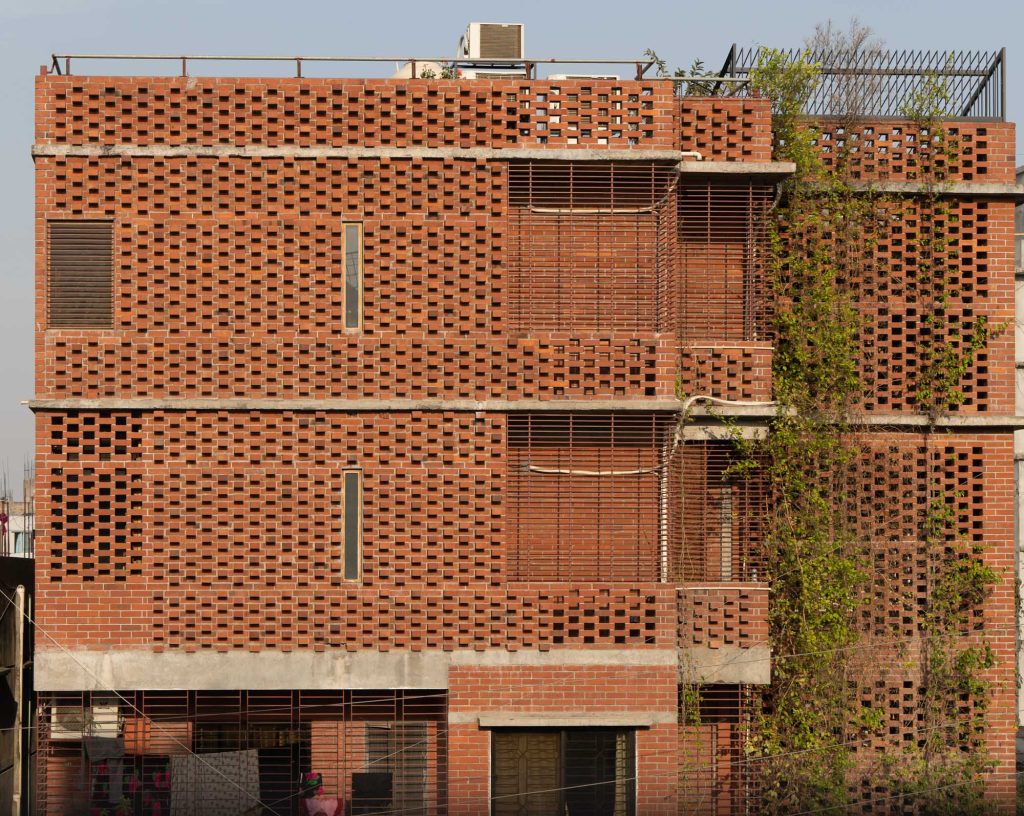
The project advanced whilst working alongside the surrounding area of the project with respect to the maintenance of the biodiversity and the already present ecosystems. One of the goals had been to ensure that, with time, the building became a part of the natural environment of the locale. “The lasting impact of the structure in the coming ten to fifteen years is as important as the building itself.”
Quamrul Hasan Pathan, with an aversion to the “modern look” retained by contemporary buildings, desired natural serenity and a somewhat unfinished aesthetic about his home. This is reflected in the stories and thoughts behind every individual element in the home, starting with the building materials, the psychological impact of the colour scheme and even landscaping. The primary structural components of the structure feature patterned brick walls, mosaic flooring and wood, used in support beams, and frames, among a plethora of other applications, incorporating the craftsmanship of multidisciplinary individuals.
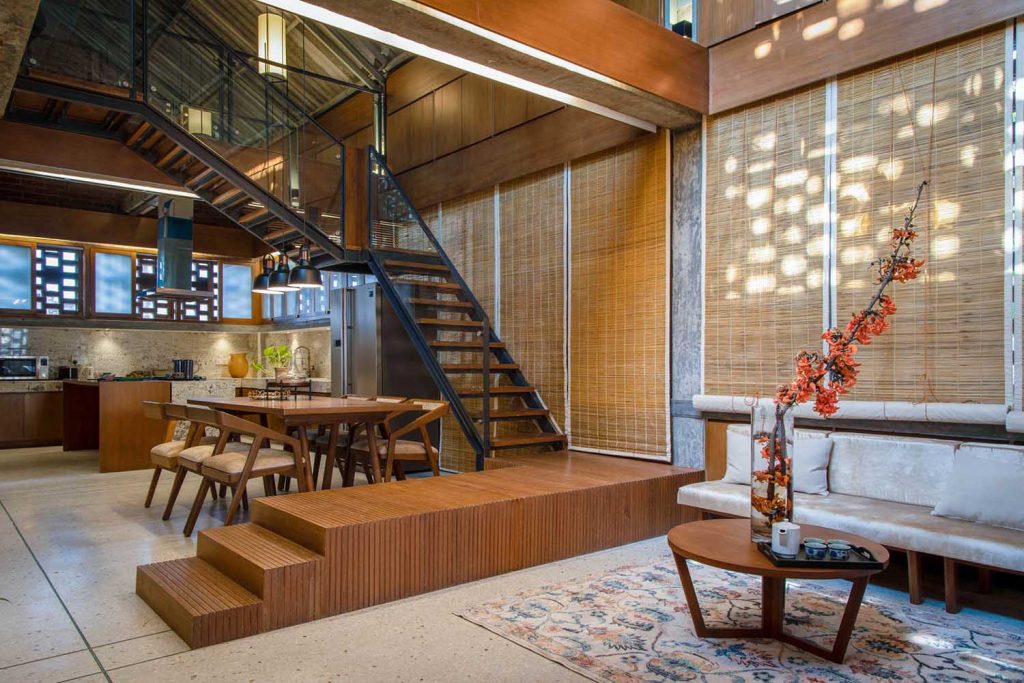
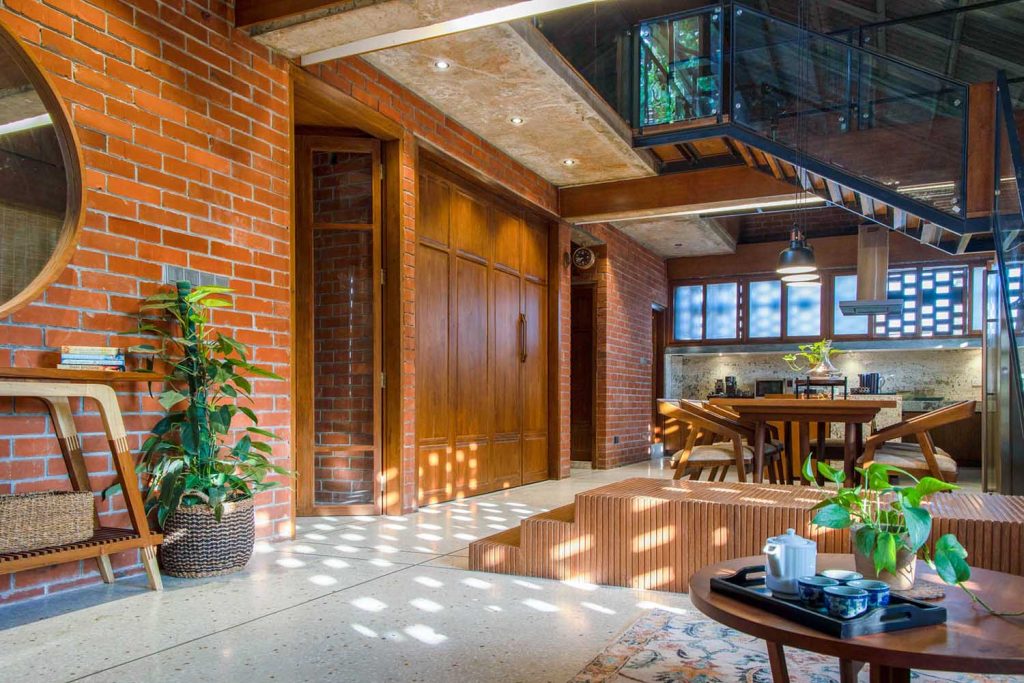
“Brick was chosen as a primary material as opposed to concrete, due to the object’s explicitly unique characteristic of graceful ageing. The material itself creates a sort of calming ambience.”
The role of plants is underscored, graciously acting out its role as decor while simultaneously fulfilling the need for shade and spreading a pleasant aroma ubiquitously, creating a stimulus marker for passersby as the experience is ingrained in their subconscious, elevating the space itself. All plant life incorporated, Creepers, Rokto Kanchan, among others, are local species that play a harmonious role in the area’s ecosystem.
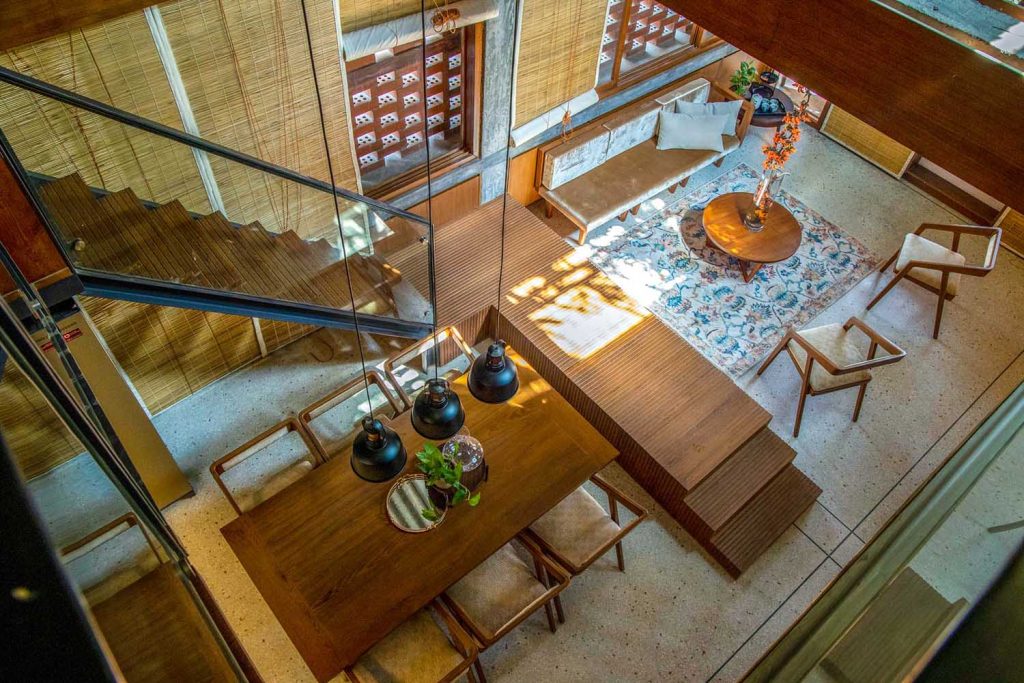
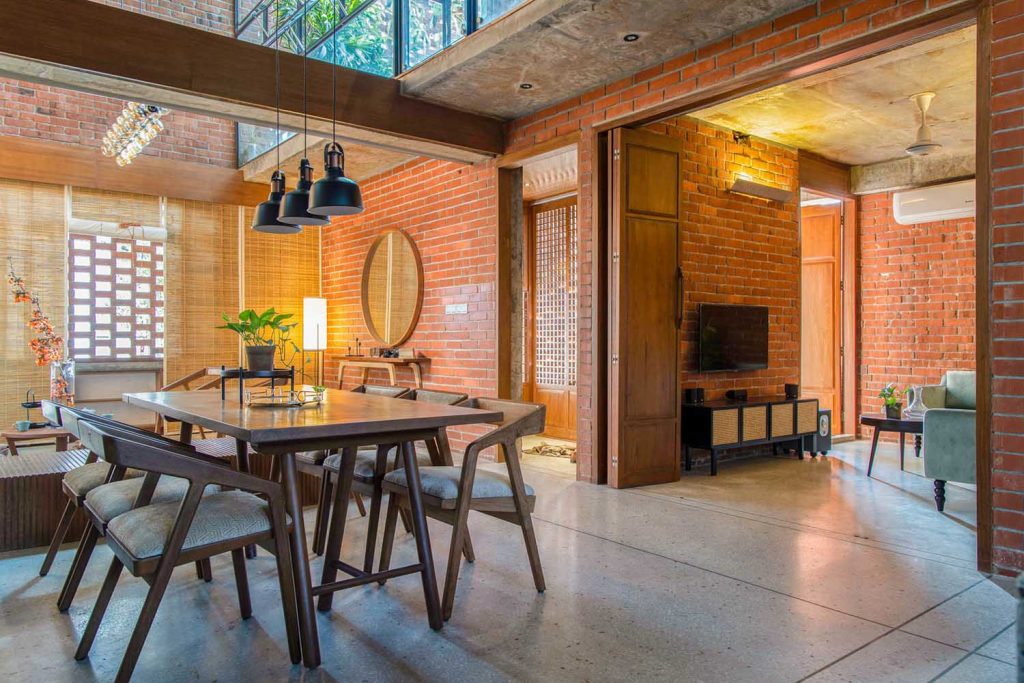
The natural walnut colour of the wood was preserved to the extent possible.
Notably, the space does not incorporate any striking colour or decor elements, relying on the fauna, flora and human components to add these facets, while the home itself is a background, acting as a silent observer to the biography of life.
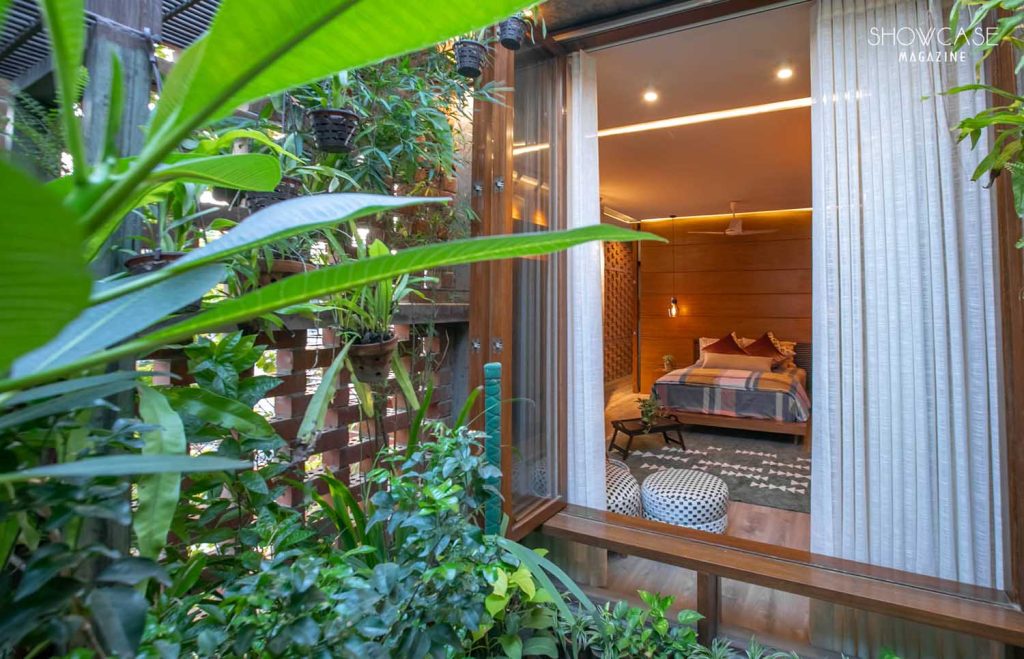
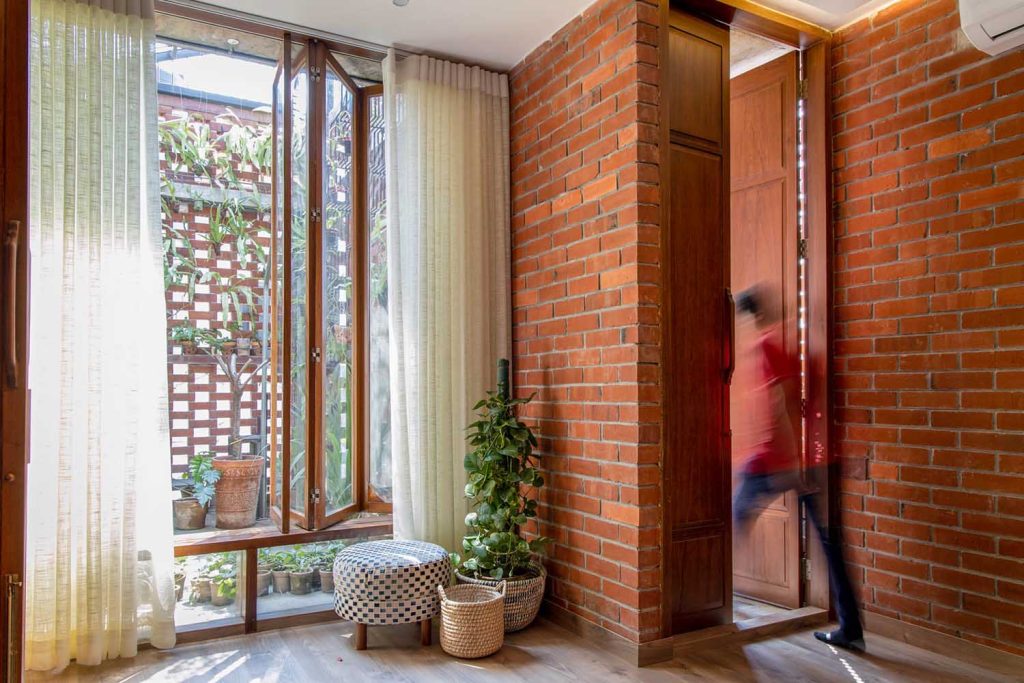
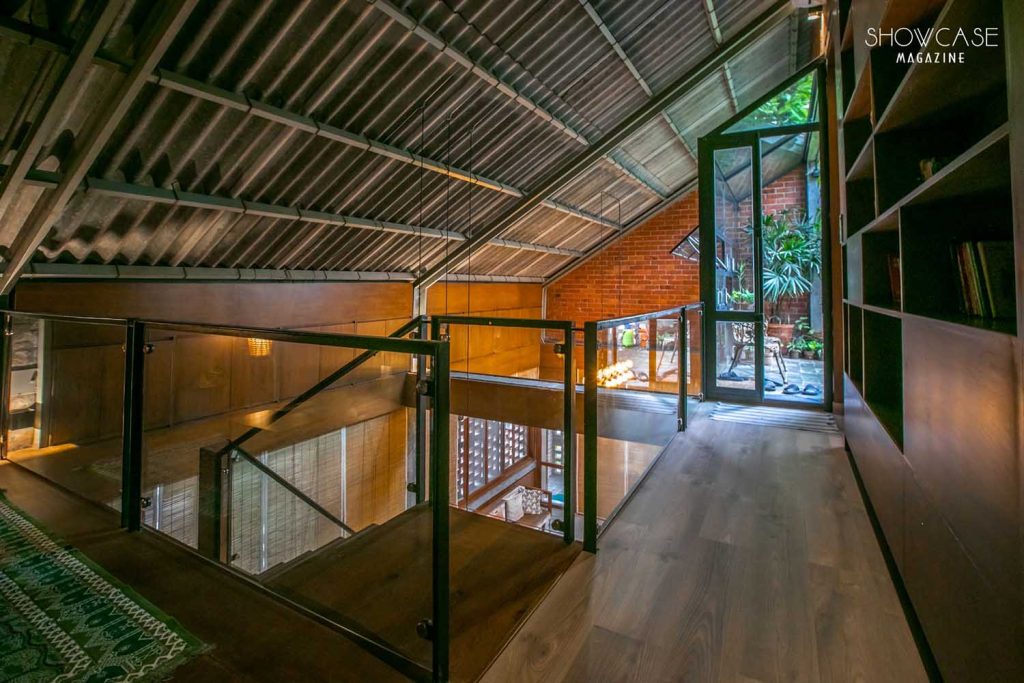
Stepping through the entrance, the experience begins immediately, leading to a communal space with an open-plan kitchen and a second bedroom. The communal area features optional segregation through a partition. The second floor houses the master bedroom, a study, with an open courtyard with a pathway to the roof. The 900 sq ft space is artfully masked to appear larger through the open concept, strategic use of space and furniture placement. Small openings in the brick wall prompt sunlight to fall into the apartment in geometric shapes, which are mimicked in the wooden wall mouldings and patterned wood doors, furniture fabric, creating synchronous consonance.
The base of the project was previously a two-unit home with an attached roof on the top floors of an apartment building situated in a high-density area. The area, alongside the building itself, is a result of unplanned development, lacking a coherent grid. This brought forth several hindrances in the planning and realisation of the design, taking around five years to reach completion. Even after execution, some bits of the area have been subjected to subtle damage and cracks; contentiously, these purposeful imperfections add to the ambient serenity of the residence.
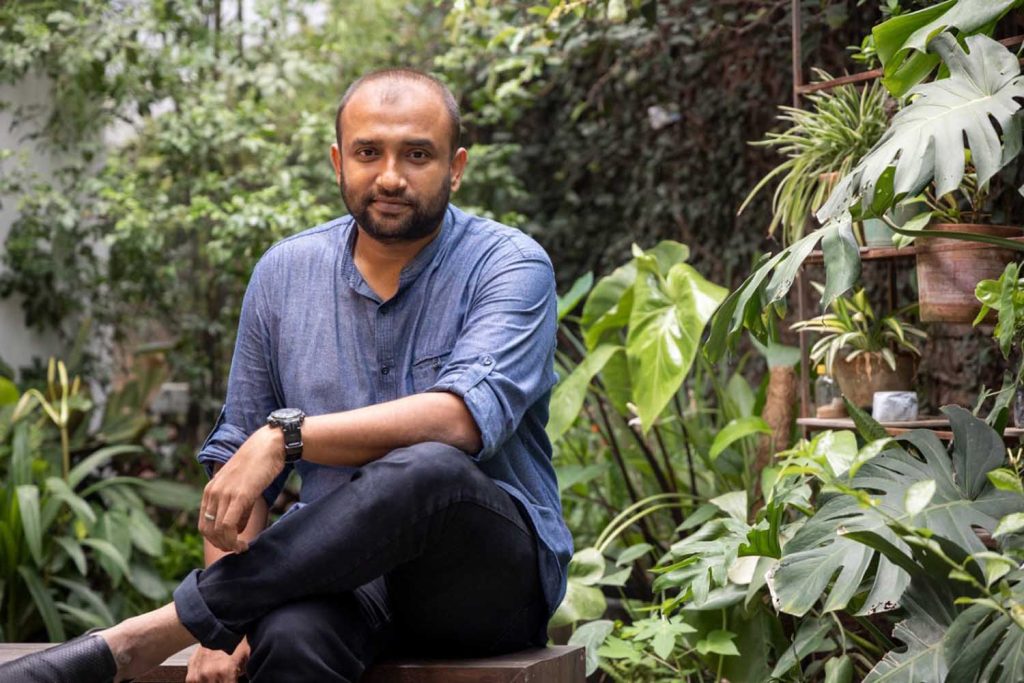
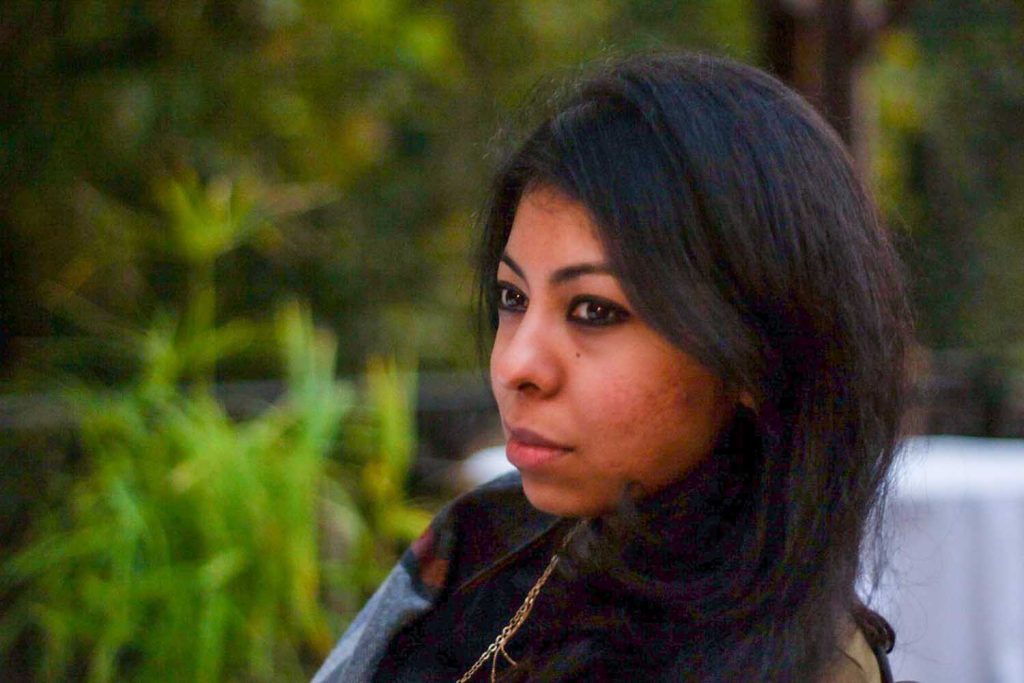
Architect Profile:
GOAAT’s core belief stems from the architectural unity between all living and non-living things, to create an ecosystem that is inclusive not only to humans but the biodiversity of the immediate surroundings. This approach is heavily influenced by the cohabitation, correlation and collaboration that each cycle of nature adheres to, to maintain its integrity and support the ecosystem. The firm specialises in multidisciplinary architecture and design practices, with architects, engineers, nature enthusiasts as well as conservationists, ornithologists and craftsmen, who share in the belief framework grounding them together.
“Buildings replace nature and its multiple interacting variables to create an optimal, congenial yet artificial environment that constantly disconnects us from our context. As we strive for a mechanical comfort zone, we continue to push the boundaries of nature by nonchalantly replacing trees and destroying the natural habitat of the entire living organism that primarily supports the ecosystem.”
Photography by Muhammad Bin Monzur, Zakaria Ahmed, Utsha Zaman, Raihan Sayeem

